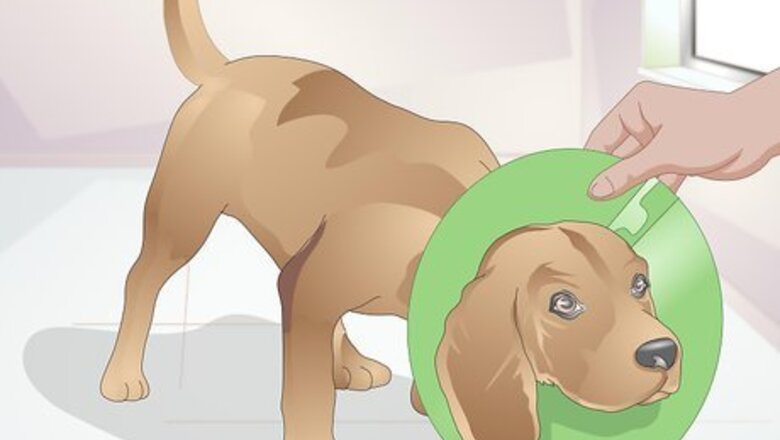
views
Preventing Your Pet from Licking Themselves
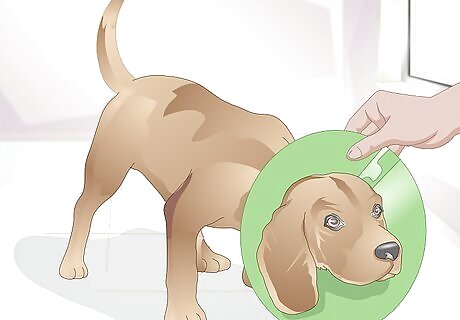
Use an Elizabethan collar. An Elizabethan collar is a cone-shaped collar that fits around your pet's neck. Elizabethan collars are designed to impede and prevent your pet from licking themselves, messing with stitches, or other similar activities. Consult your vet before using an Elizabethan collar. Make sure the collar is a proper size for your vet. Secure it snugly, but not too tight. Apply the cream or lotion. Monitor your pet to make sure they’re not hurt by the collar and that it works.
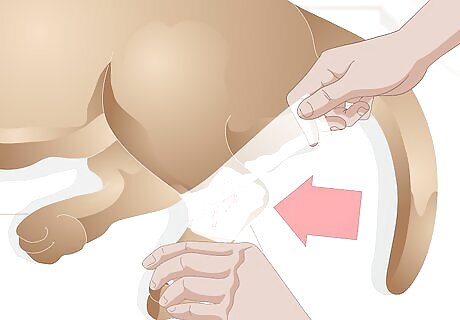
Cover your pet’s skin or wound with a bandage. The best way to prevent your pet from licking lotion or cream off themselves is to cover the area of skin with a bandage. Make sure to: Apply the cream or lotion to your pet. Wrap the area with a bandage or some other fabric. Consider applying extra lotion or cream since the fabric might absorb some. If your pet needs to have lotion or cream applied regularly, you should change the bandage often. Using the same bandage for more than a day might promote the growth of bacteria or worsen an already bad infection.
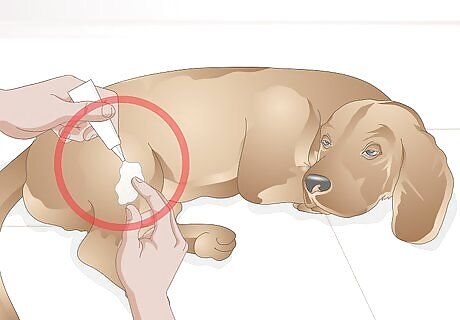
Apply lotion or cream to your pet when they’re tired or sleeping. You should also consider applying lotion or cream to your pet when they’re too tired to lick it. While this won’t always work, it is a good way of preventing your pet from licking themselves. Consider: Applying lotion or cream shortly after your pet has settled into sleep for the night or even for a nap. Make sure everyone around the house or around your pet has also settled in and are not doing anything to awake or distract them. Under the advice of a veterinarian, you may also consider applying lotion or a cream in conjunction with a medication that may make your pet sleepy. This will most likely be the case if the pet has had some sort of severe injury and is recovering from surgery or something similar.
Training Your Pet to Not Lick You or Themselves
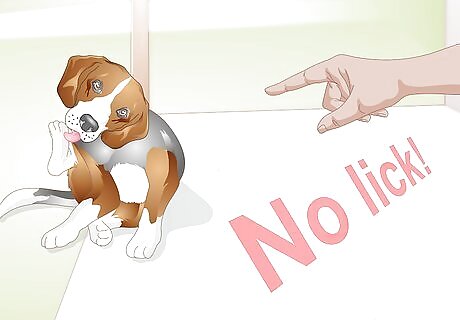
Try verbal commands. Spend a little time teaching your pet to obey verbal commands not to lick themselves or you. Verbal commands, once you teach your pet, will prove very effective. When your pet is licking you or themselves, say “no lick!” Move away from your pet slowly as you give the command. Only repeat the command once or twice. Don’t yell at your pet. Training with verbal commands may take several weeks or longer. Have patience.
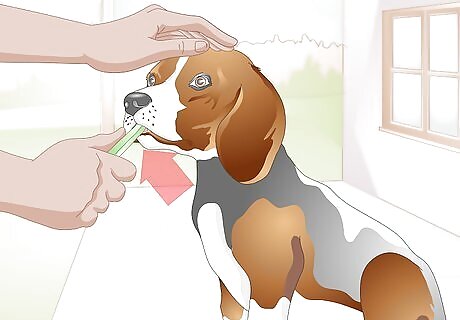
Use positive reinforcement. Positive reinforcement is a great way to stop your pet from licking you or themselves. Remember, the point of positive reinforcement is to reward the pet for doing (or not doing) the intended behavior. Pair your positive reinforcement with verbal commands. When the dog obeys your verbal command, reward them. After the dog obeys what you’ve said, reward them with a treat and/or by saying “good boy.”
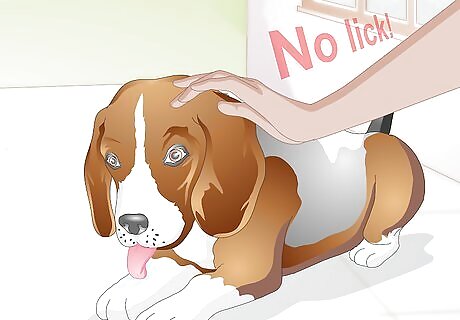
Use negative reinforcement. If verbal commands and positive reinforcement have not worked, you may want to consider negative reinforcement. With negative reinforcement, you’ll essentially train your pet by punishing them for licking the cream or ointment. One of the gentlest ways to use negative reinforcement is to simply touch or tap your pet lightly when they lick lotions or creams. This is best paired with a verbal command such as “no lick!” If you want to escalate negative reinforcement, you can try using a spray bottle. Simply spray your pet lightly when they lick you or themselves. Never hit your pet. Hitting is not an effective way of training and will alienate your pet from you. Also, be aware that negative reinforcement may not work when you aren't in the room. Many dogs will associate the owner with the punishment, rather than the activity. This means they don't lick when the owner is there, but will happily return to licking once they've left.
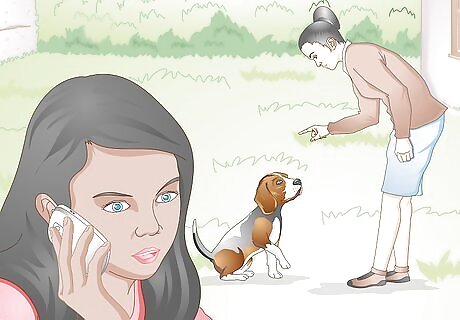
Consult a trainer or vet. You can also consult a trainer or your veterinarian for ideas about training your pet. Ultimately, as pet care professionals, they'll have access to the latest information about how to stop your pet from licking lotions or creams. Consider enrolling your pet in a training program. Schedule a consultation with a trainer about your cream or lotion licking problem. Tell the trainer that you have serious concerns about it. Mention the licking problem to your veterinarian at your next visit. Your vet may have some really good ideas about how to stop your pet from licking.
Discouraging Your Pet from Licking
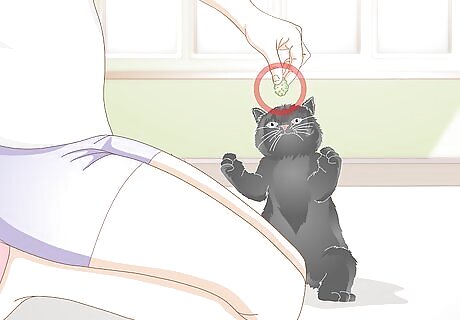
Keep your pet occupied doing something else. Whether you’re trying to discourage your pet from licking themselves or you, you can try to keep them occupied doing something else. By offering them something more enticing to do, you’ll stop your pet from licking lotions or creams. Many prescribed creams or ointments are rapidly absorbed, so by distracting the dog and playing with him immediately after application, this can give the cream enough time to sink in. Consider: Offering your pet food or treats to distract them from the lotion or cream. Playing with your dog after you apply the lotion or cream. This will be especially helpful if you’ve applied it to your pet. Taking your pet on a walk or traveling somewhere with them. This way, your pet will focus their attention on their surroundings rather than the lotion or cream.

Add a flavor that might discourage your pet from licking. You can also consider mixing a particular flavor that your pet doesn’t like into the cream or ointment. This way, you’ll turn your pet off to it. Think about pre-made store-bought formulas used to repel cats or dogs. You'll probably just be able to spray the formula onto the cream or ointment. Make sure that the formula is safe for consumption. Consult your veterinarian about what flavors or additives might discourage your pet from licking creams or ointments.
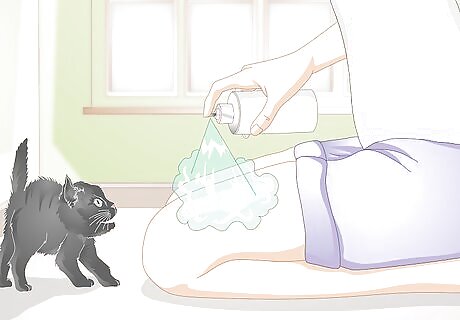
Apply a scent that will repel your pet. A really effective way to stop your pet from licking cream or ointment is to apply an additional scent that they may not like. Such scents can often be applied via a spray bottle onto the ointment or cream. Ultimately, your pet won’t want to lick a cream or ointment that smells bad to them. You may not even need to apply the scent onto the ointment or cream, but just on the general area of the body where the lotion or cream is applied. The scent may conflict with the natural scent of the cream or ointment. Experiment to make sure you’re comfortable with the scent mixture before you use it. As with adding flavors, consider using citrus to repel your pet from licking creams or ointments. Most dogs and cats dislike the smell of citrus.




















Comments
0 comment